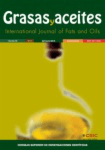
GRASAS Y ACEITES
Scope & Guideline
Advancing knowledge in fats and oils.
Introduction
Aims and Scopes
- Chemical and Physical Properties of Oils:
Research on the chemical composition, physical properties, and oxidative stability of various oils, including novel extraction methods and their effects on oil quality. - Nutritional Aspects and Health Benefits:
Exploration of the nutritional profiles of oils and fats, including studies on their fatty acid compositions and potential health benefits, particularly in relation to metabolic health and chronic disease prevention. - Innovative Extraction and Processing Techniques:
Focus on advanced methodologies for oil extraction, such as enzymatic treatments, supercritical fluid extraction, and the application of novel technologies like ultrasound and microwave-assisted processes. - Food Applications and Safety:
Studies examining the application of oils in food products, including their roles as functional ingredients, preservatives, and their interactions with other food components to enhance safety and quality. - Environmental and Sustainability Issues:
Research addressing the sustainability of oil production, including the valorization of by-products, waste reduction strategies, and the ecological impacts of oil extraction and processing.
Trending and Emerging
- Health and Functional Properties of Oils:
A significant trend is the increased focus on the health benefits of various oils, particularly in relation to metabolic syndrome and chronic diseases, underscoring the importance of oils in diet and health. - Innovative Preservation Techniques:
Emerging research on the use of natural preservatives and antioxidants in oils demonstrates a shift towards enhancing oil stability and shelf-life while minimizing synthetic additives. - Sustainability and Eco-friendly Practices:
There is a growing emphasis on sustainable practices in oil production and processing, reflecting global concerns over environmental impact and the need for eco-friendly methodologies. - Advanced Analytical Techniques:
The use of sophisticated analytical techniques, such as lipidomics and advanced spectroscopic methods, is on the rise, facilitating a deeper understanding of lipid properties and interactions. - Consumer Preferences and Sensory Evaluation:
Increasing research on consumer preferences, sensory characteristics, and the marketability of oils indicates a trend towards addressing consumer demands and enhancing product quality.
Declining or Waning
- Traditional Extraction Methods:
Research on conventional oil extraction methods has decreased as newer, more efficient techniques gain popularity, reflecting a broader trend towards innovation in lipid extraction. - Basic Nutritional Studies:
There has been a waning interest in basic nutritional studies that do not incorporate advanced methodologies or health implications, as the focus shifts to more complex interactions between oils and health outcomes. - General Reviews on Oil Types:
The publication of broad reviews summarizing various types of oils without specific applications or innovations has declined, as researchers now prefer to publish more targeted and detailed studies. - Minor Oil Sources:
Research on less commercially significant oils or those with limited applications has decreased, likely due to a growing emphasis on economically viable and widely used oil sources.
Similar Journals
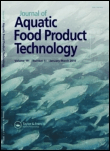
Journal of Aquatic Food Product Technology
Exploring the depths of food technology in aquatic science.Journal of Aquatic Food Product Technology is a vital publication dedicated to advancing research and innovation in the fields of aquatic science and food technology. Established in 1992 and published by TAYLOR & FRANCIS INC, this journal provides an exceptional platform for researchers, professionals, and students to share their findings and insights on the science and technology surrounding aquatic food products. With an ISSN of 1049-8850 and an E-ISSN of 1547-0636, the journal caters to a global audience, contributing to significant advancements in both the agricultural and biological sciences. As of 2023, it holds a prestigious position in the Q3 quartile for both Aquatic Science and Food Science categories, reflecting its role in the scientific community. Furthermore, with Scopus rankings placing it at #106 out of 247 in its field, this journal is an essential resource for those dedicated to understanding and innovating in the domain of aquatic food products. Although not an open access journal, it ensures that the important research it publishes is accessible to a wide audience interested in improving food safety, sustainability, and nutrition from aquatic sources.

International Food Research Journal
Unveiling Breakthroughs in Food Science and TechnologyThe International Food Research Journal, published by UNIV PUTRA MALAYSIA PRESS, serves as a pivotal platform for disseminating innovative research within the field of food science. With an ISSN of 1985-4668 and an E-ISSN of 2231-7546, the journal has successfully established its presence since its inception in 2007, converging its findings through 2024. This esteemed journal holds a Q3 ranking in Food Science, illustrating its valuable contributions to the field as demonstrated by its Scopus rank of 276 out of 389, placing it in the 29th percentile among its peers in Agricultural and Biological Sciences. Although it operates under a traditional publishing model, its academic integrity and focus on high-quality research ensure that it remains a vital resource for researchers, professionals, and students eager to explore advances in food technology, nutrition, and safety. By encouraging interdisciplinary collaboration and critical dialogue, the International Food Research Journal plays an essential role in shaping the future of food science research.
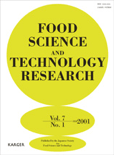
FOOD SCIENCE AND TECHNOLOGY RESEARCH
Exploring the Future of Food ScienceFOOD SCIENCE AND TECHNOLOGY RESEARCH, published by the Japanese Society of Food Science & Technology, is a pivotal journal that encompasses a wide spectrum of research in the fields of food science, biotechnology, and engineering. With its ISSN number 1344-6606 and a digital counterpart E-ISSN 1881-3984, this journal aims to disseminate cutting-edge research and innovative technologies that enhance food safety, quality, and sustainability. Recognized for its contributions, it holds a Q3 category ranking in multiple disciplines, including Food Science and Biotechnology, indicating a significant role in advancing academic discourse. Researchers and professionals can benefit from its insights, as the journal covers an array of topics relevant to industrial applications, marketing strategies, and scientific advancements. Although not an open-access journal, it has a wide reach and is committed to providing high-quality, peer-reviewed content essential for scholars and practitioners in the food science community from 1999 to 2024.

Fermentation-Basel
Unleashing Potential in Biochemistry and BeyondFermentation-Basel is a premier open access journal published by MDPI, located in the heart of Switzerland, that has been at the forefront of advancement in the fields of Biochemistry, Genetics, Molecular Biology, Food Science, and Plant Science since its inception in 2015. With an impact factor that reflects its growing reputation, the journal is categorized within the Q2 quartile in multiple disciplines, illustrating its significant contributions to research and providing a critical platform for scholars and professionals alike. The journal showcases a wide range of topics related to fermentation processes, fostering innovation in both fundamental research and practical applications across various sectors. Having converged its focus from 2015 to 2024, Fermentation-Basel remains committed to facilitating interdisciplinary collaboration and disseminating valuable knowledge, making it an indispensable resource for students, researchers, and industry experts eager to stay abreast of the latest developments in fermentation science.
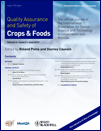
Quality Assurance and Safety of Crops & Foods
Bridging the gap between agriculture and food safety.Quality Assurance and Safety of Crops & Foods is a leading peer-reviewed journal, published by CODON PUBLICATIONS, dedicated to advancing the fields of Agronomy and Crop Science and Food Science. Since its inception in 2009, this journal has established itself as a crucial platform for researchers, professionals, and students, focusing on the vital intersection of agricultural safety and food quality. With a commendable impact factor and a current Scopus ranking placing it in the top quartiles of its field (Q2 in 2023), it serves as an essential resource for those committed to ensuring the safety and quality of global food supplies. The journal provides open access options to enhance the dissemination and accessibility of research findings, thus fostering collaborative efforts to tackle contemporary challenges in food production and safety. By showcasing innovative methodologies and cutting-edge research, Quality Assurance and Safety of Crops & Foods not only contributes to scientific discourse but also plays a pivotal role in informing policy and practice in sustainable agricultural practices.
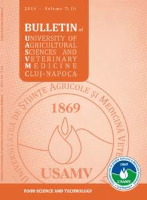
Bulletin of University of Agricultural Sciences and Veterinary Medicine Cluj-Napoca-Food Science and Technology
Elevating Research in Agricultural Sciences and Food InnovationBulletin of University of Agricultural Sciences and Veterinary Medicine Cluj-Napoca - Food Science and Technology is a prominent peer-reviewed journal dedicated to advancing the field of food science and technology. Published by the University of Agricultural Sciences and Veterinary Medicine Cluj-Napoca, this open-access journal has been serving the academic community since 2013, promoting the dissemination of high-quality research that addresses pressing issues in food safety, quality, and innovation. With its ISSN 2344-2344 and E-ISSN 2344-5300, the journal aims to bridge the gap between academia and industry by providing a platform for scholars and practitioners to share their findings, insights, and methodologies. Situated in the heart of Romania, the journal reflects the country's rich agricultural heritage and its commitment to enhancing global food systems. By maintaining a rigorous editorial standard, the Bulletin ensures that it remains a vital resource for researchers, industry professionals, and students who are keen to explore the latest developments in food science.
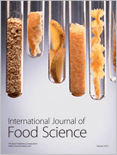
International Journal of Food Science
Advancing the Frontiers of Food ScienceThe International Journal of Food Science, published by HINDAWI LTD, stands as a crucial platform for advancing knowledge within the realm of food science. Established in 2013, this Open Access journal based in Egypt has garnered significant recognition, achieving an impressive Q2 classification in the 2023 Food Science category, which reflects its commitment to quality and impactful research. With a Scopus rank of #88 out of 389 in Agricultural and Biological Sciences and placing in the 77th percentile, this journal serves as an essential resource for researchers, professionals, and students dedicated to innovative developments and scientific exploration in food science. The journal not only provides unrestricted access to valuable research but also aims to foster collaboration and dissemination of knowledge on critical issues affecting food safety, nutrition, and technology. For those looking to keep abreast of the latest advancements, the International Journal of Food Science is certainly an indispensable addition to their academic pursuits.
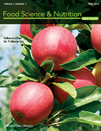
Food Science & Nutrition
Empowering research for sustainable food and nutrition solutions.Food Science & Nutrition is an esteemed peer-reviewed journal published by WILEY, dedicated to advancing the fields of food science and nutritional research. With an impressive impact factor and a prestigious Q1 ranking in the Food Science category, this journal stands out as a leading platform for innovative research, offering meaningful insights into the relationship between food composition and health outcomes. Since its transition to Open Access in 2013, Food Science & Nutrition has championed the global dissemination of knowledge, ensuring that vital research is accessible to researchers, professionals, and students alike. With a vast scope that encompasses both agricultural and biological sciences, the journal provides a comprehensive view of emerging trends, methodologies, and applications in food security and nutrition, making it indispensable for those invested in these critical areas.

Food Production Processing and Nutrition
Navigating the future of food processing and nutrition.Food Production Processing and Nutrition, published by SpringerNature, stands at the forefront of advancing knowledge in the vibrant fields of food science, nutrition, and public health. This esteemed Open Access journal, operational since 2019, plays a pivotal role in disseminating breakthrough research that intersects food production processes with nutritional insights, making it an invaluable resource for researchers, professionals, and students alike. With a commendable 2023 impact factor reflecting its robust scholarly contributions — Q1 in Food Science and Q2 in both Nutrition and Dietetics and Public Health, Environmental and Occupational Health — the journal not only emphasizes the importance of innovative food processing methods but also addresses pressing nutritional challenges faced globally. Located in the United Kingdom, it claims an impressive Scopus ranking, with a notable percentile standing across various categorical metrics. As such, Food Production Processing and Nutrition is essential for anyone aiming to deepen their understanding of how food systems impact public health through effective processing and nutritional strategies.
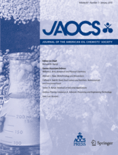
JOURNAL OF THE AMERICAN OIL CHEMISTS SOCIETY
Transforming Ideas into Impactful ResearchJOURNAL OF THE AMERICAN OIL CHEMISTS SOCIETY, published by WILEY, is a premier academic journal that has been at the forefront of research in the fields of chemical engineering and organic chemistry since its inception in 1947. With an ISSN of 0003-021X and an E-ISSN of 1558-9331, this journal serves as an invaluable resource for researchers and professionals interested in the latest advancements and methodologies in oil chemistry and related disciplines. The journal holds impressive rankings, placing in the Q2 category for Chemical Engineering and Q3 for Organic Chemistry, reflecting its influential position in the academic community as evidenced by its Scopus rankings. While it follows a subscription model, the journal remains committed to disseminating quality research, aiming to enhance understanding and application within the chemical science sector. Researchers, professionals, and students engaged in oil chemistry and engineering will find JOURNAL OF THE AMERICAN OIL CHEMISTS SOCIETY crucial for staying abreast of developments that shape this dynamic field, as it continues to publish cutting-edge research through to 2024 and beyond.